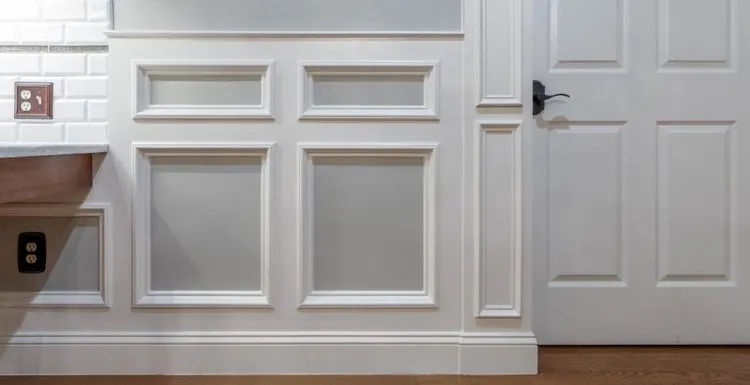Ideas for wainscoting can go far beyond the conventional, plain paneling with a chair rail on top.
Take inspiration from one of the 30 modern wainscoting ideas we’ve found below to give your walls a unique look. Read on to see the inspiration.
30 Modern Wainscoting Ideas
Walls often get overlooked when it comes to home décor. Once a paint color or wallpaper is chosen, the focus shifts to floor coverings and furniture.
You can do more than paint or paper your walls to create a unique look. Whether you prefer subtle or bold décor choices, here are 30 modern wainscoting ideas to help you dress up your walls.
1. Angled to Match a Staircase
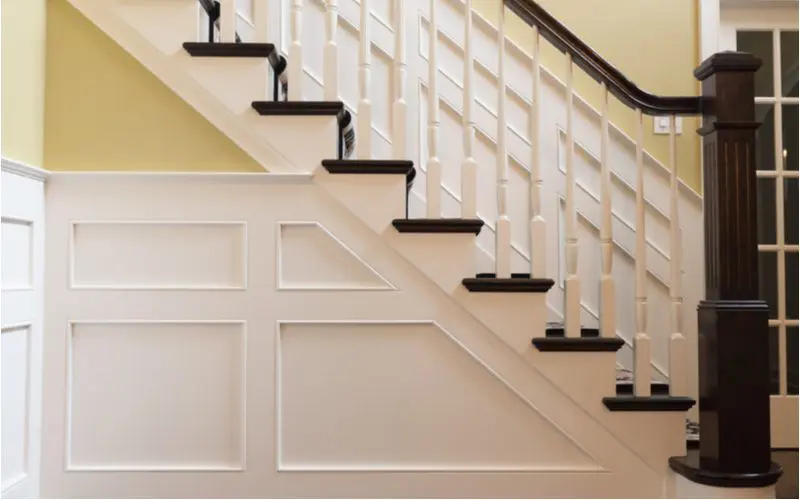
victory.dv/Shutterstock
Raised-panel wainscoting painted white adds visual interest beneath the stairs, and matching panels cover the staircase wall.
Unlike most stairwell wainscoting, the panels match the angle of the ascent, giving the stairs a unique look. The angled panels create a more cohesive look than straight up-and-down paneling would.
2. Formal and Fancy
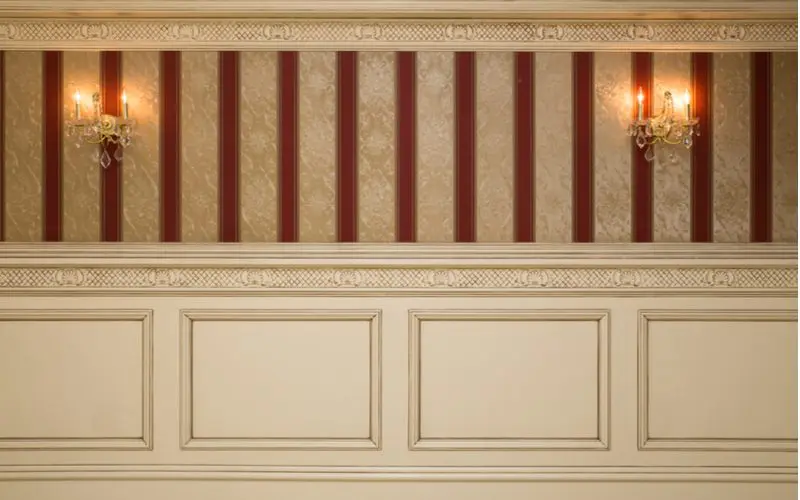
littlenySTOCK/Shutterstock
When you want a formal look, try wainscoting with an intricately carved upper rail that also serves as ceiling molding. The matching rails painted in a complementary shade to the formal wallpaper have a distressed look to give the illusion of age.
3. Dramatic Flair
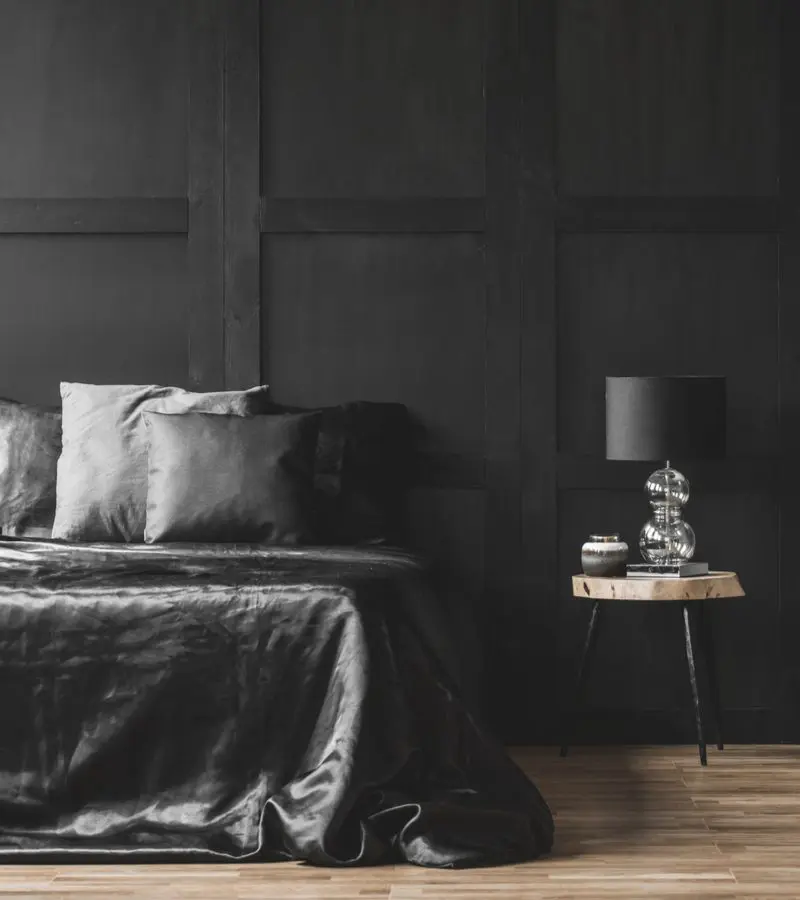
Photographee.eu/Shutterstock
Board-and-batten wainscot panels used on an entire wall and painted black give a bedroom a modern look. The dark panels are understated but give the room a dramatic flair and a point of interest besides the bed.
4. Wallpaper Wainscoting
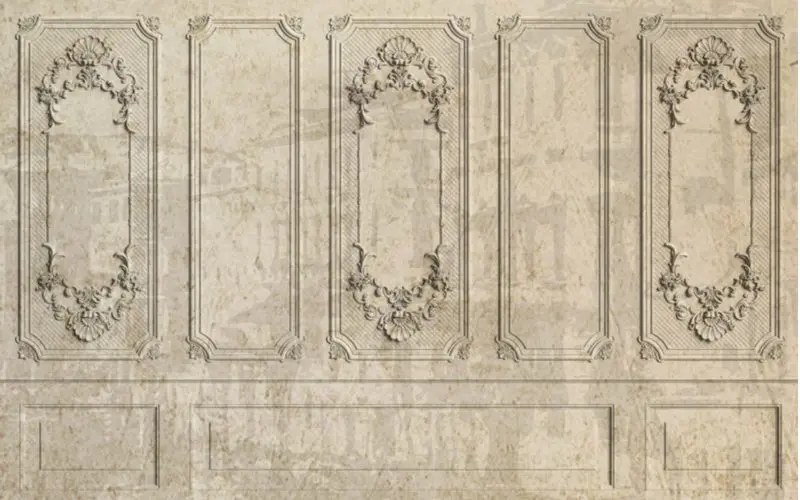
M.ilker09/Shutterstock
Wainscoting helps lower wallpapering costs, but you can combine paneling with wainscot-look 3D wallpaper or use the paper on the entire wall for an elegant look that’s hard to achieve with paneling alone.
5. A Lovely Landing
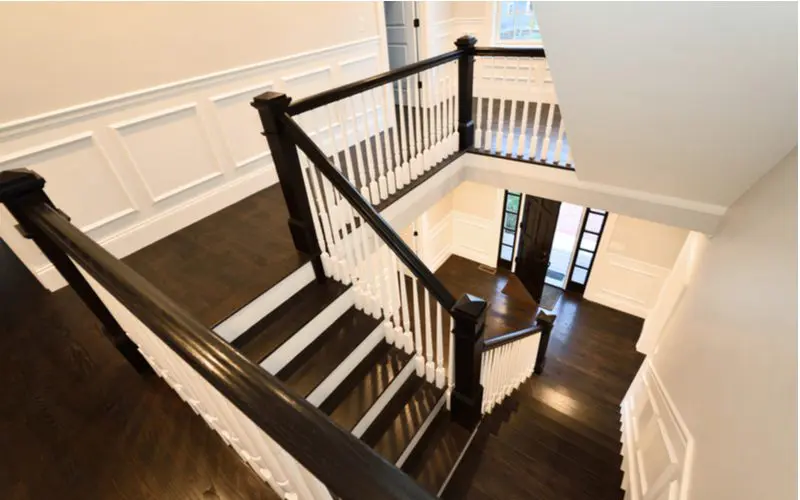
Jorge Salcedo/Shutterstock
Add interest to the landing at the top of a stairwell with standard-height raised panels and a small, basic chair rail. When the height of the panels matches the banisters, it creates a pleasant visual balance.
6. Minimalist Panels
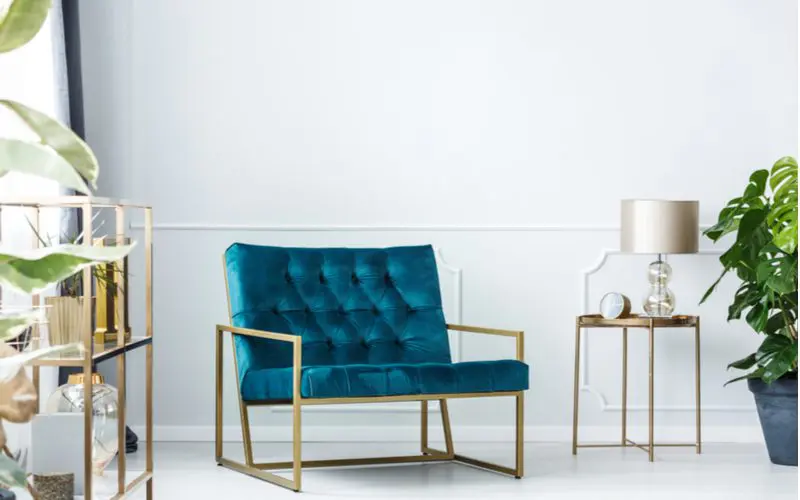
Photographee.eu/Shutterstock
When you want other features to get the focus, try minimalist flat panels in a classic style. A simple design and a thin chair rail add interest when you look at the wall, but stay in the background to frame the other bold elements in the room.
7. A Paneled Archway
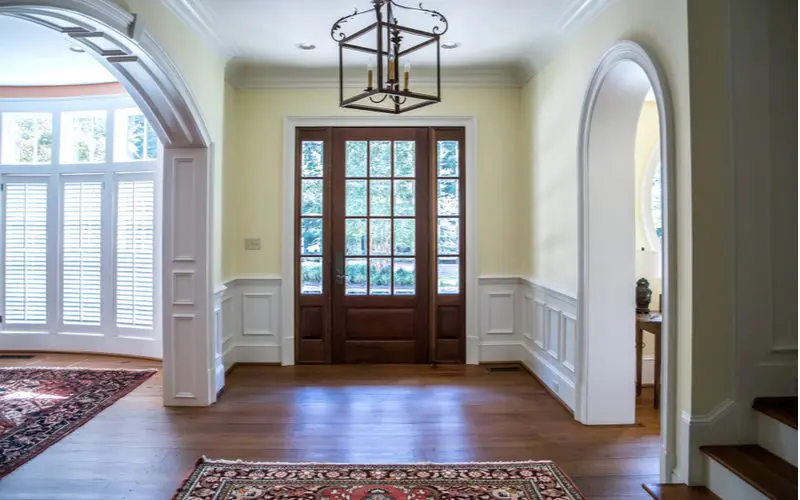
Ursula Page/Shutterstock
Basic short wainscoting goes from ordinary to eye-catching when a matching design decorates the inside of an archway.
The element adds a dramatic look to an already interesting architectural element and pulls the rooms together more than a simple color can do.
8. Monochrome Effects

gmrbrown/Shutterstock
Classic white wainscoting with tall rectangular panels matches the look of the tall rectangular doors and creates a pattern that’s pleasing to the eye.
Rectangular bevels on the doors and the monochrome color scheme give the room a balanced, relaxing look.
9. Simple Craftsman Style
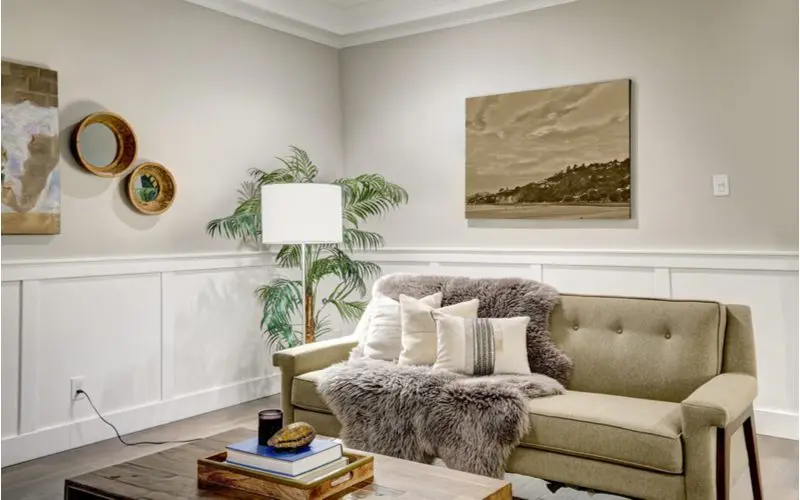
Artazum/Shutterstock
White board-and-batten paneling creates a craftsman-style look that can be the backdrop for any décor.
The Quaker style works for a classic Craftsman décor theme or provides a neutral foundation for a more modern aesthetic.
10. Shiplap Style
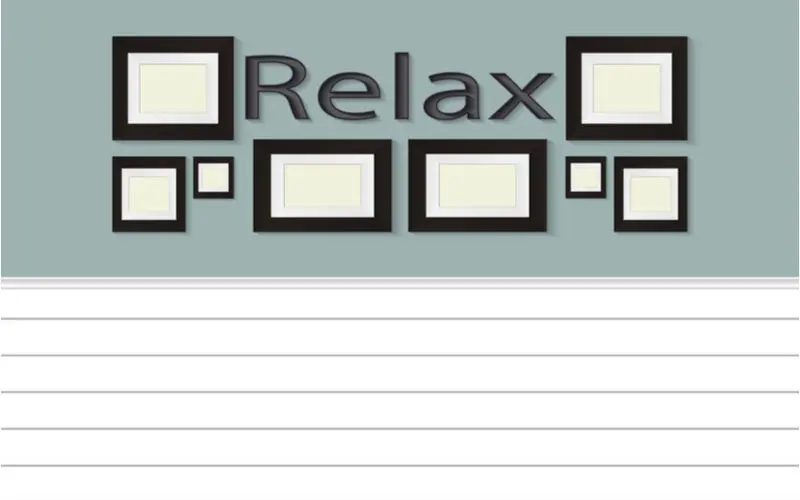
Doubletree Studio/Shutterstock
Instead of traditional wainscoting, shiplap panels topped with a thin chair rail look dramatic beneath a photo wall or a large painting.
Shiplap panels taken to the ceiling or higher than standard chair rails add even more dramatic flair.
11. Mixed Styles
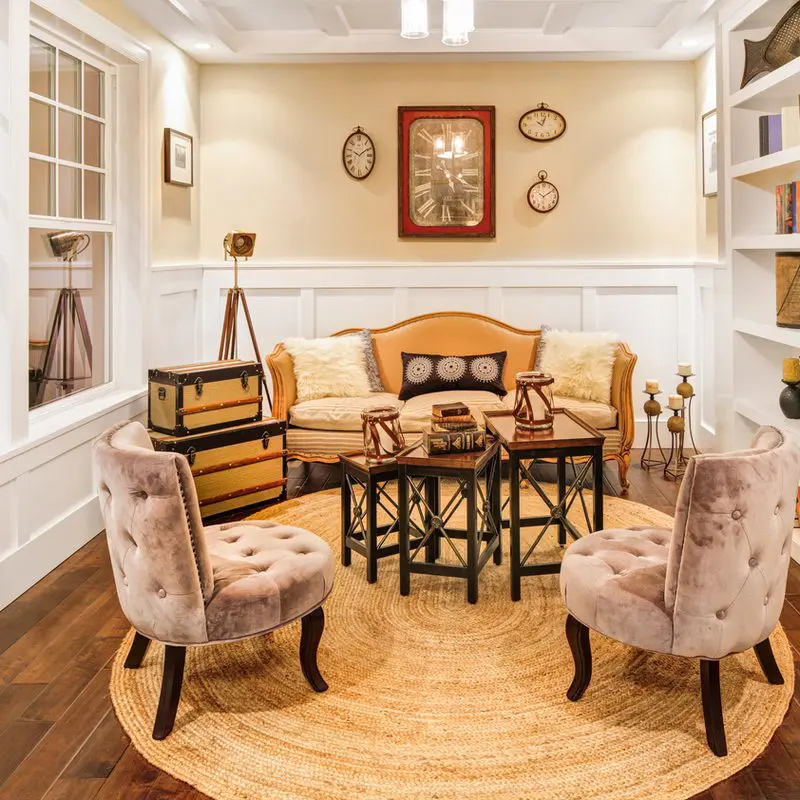
Breadmaker/Shutterstock
Standard raised-panel wainscoting gives a mantel-like look behind a couch in a sitting area.
Wide, shorter panels continue the wainscoting below large windows to add new angles to a room full of different shapes and colors.
12. Molding and Wallpaper
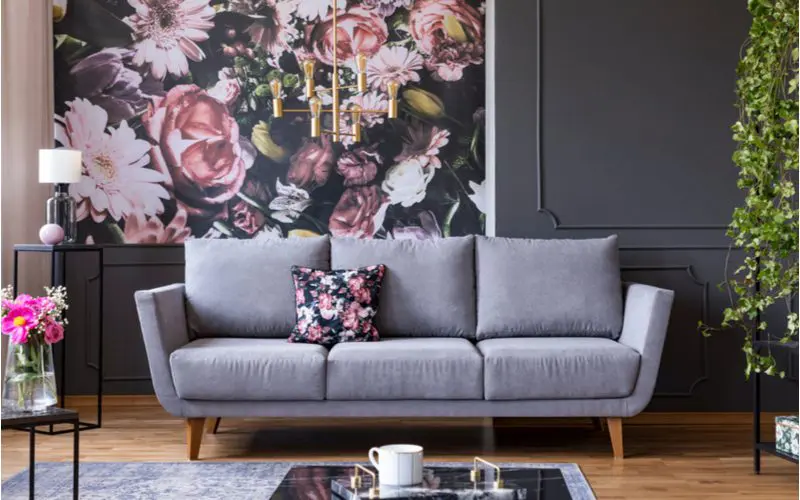
Photographee.eu/Shutterstock
A big, bold wallpaper design that would overwhelm a room turns one wall section into a work of art.
Simple molding used to create the look of wainscoting doesn’t end at chair-rail height but creates a huge panel next to a wallpapered section to give it balance.
13. A Clean Palette
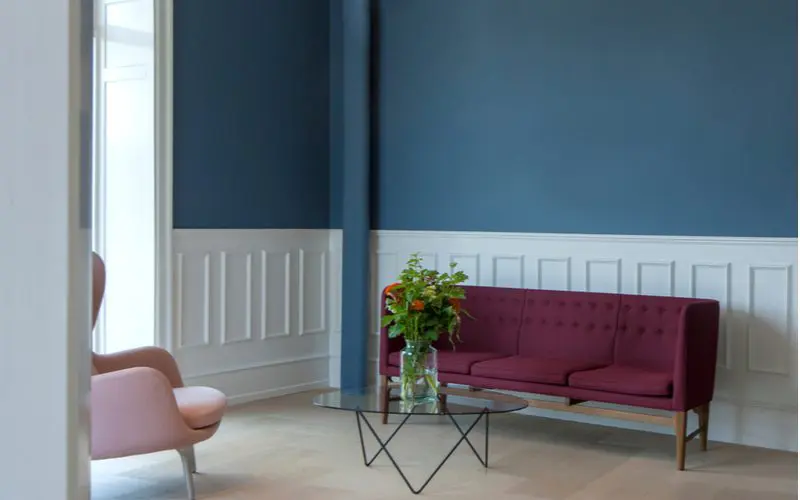
gmrbrown/Shutterstock
White wainscoting against a colorful wall creates a clean palette that lets colorful furniture pop in a way it wouldn’t against the painted wall.
The white pulls all the colors together and creates a deliberate look to avoid a jumble of colors.
14. Simple and Functional
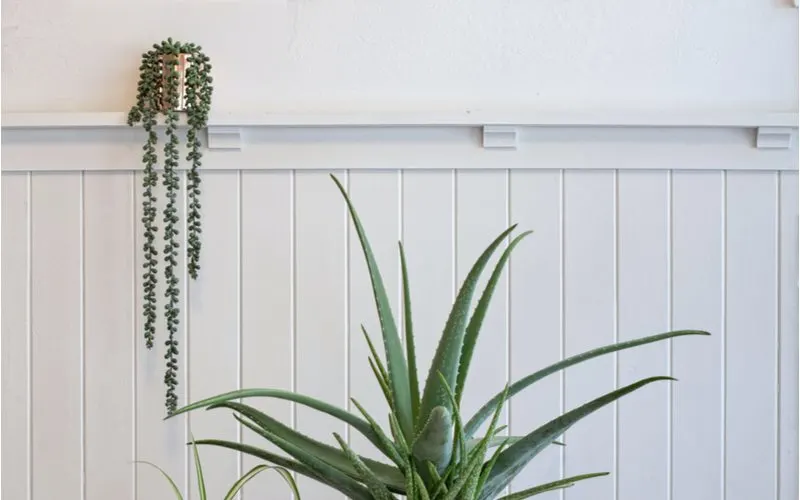
Tanya NZ/Shutterstock
Basic vertical-panel wainscoting painted white serves as more than just wall protection and décor.
The paneling topper is a narrow shelf suitable for plants, picture frames, and tchotchkes instead of a standard chair rail.
15. Add Texture
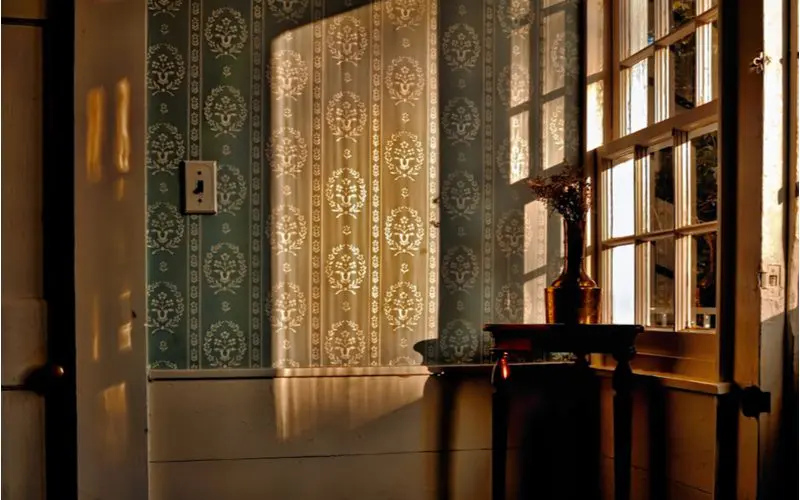
ezjay/Shutterstock
Shiplap panels lead up to a thin chair rail to top it off.
The simple and subtle look leads to a heavily patterned wallpaper that would be overwhelming on the entire wall but looks dramatic above neutral-colored wainscoting.
16. A Neutral Backdrop
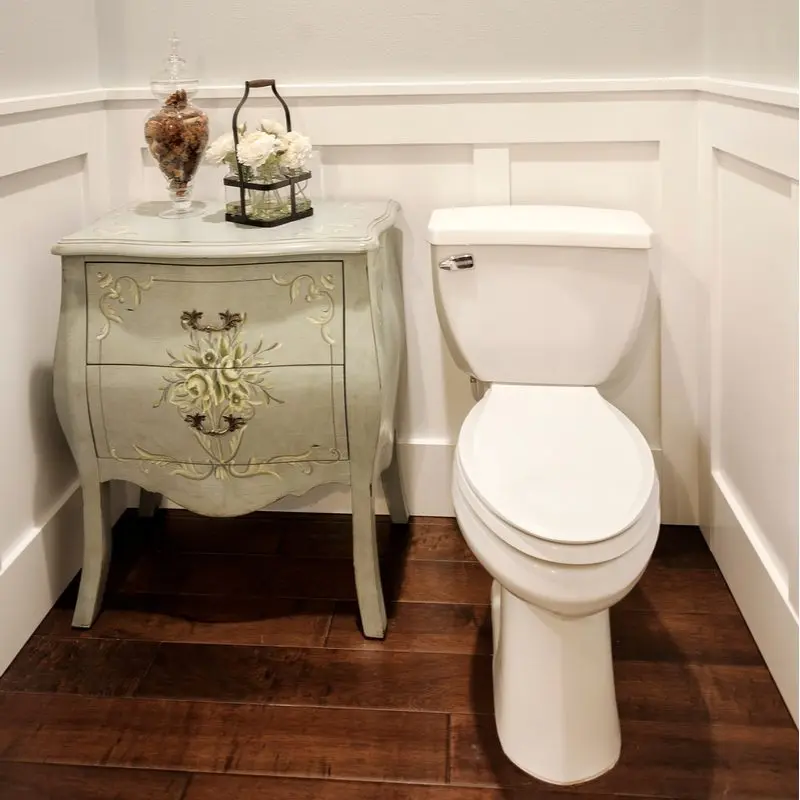
Breadmaker/Shutterstock
White, flat-panel wainscoting creates a plain background to showcase elegant furniture like a small table with drawers.
The curves and intricate details stand out against the craftsman-style walls.
17. Create an Illusion
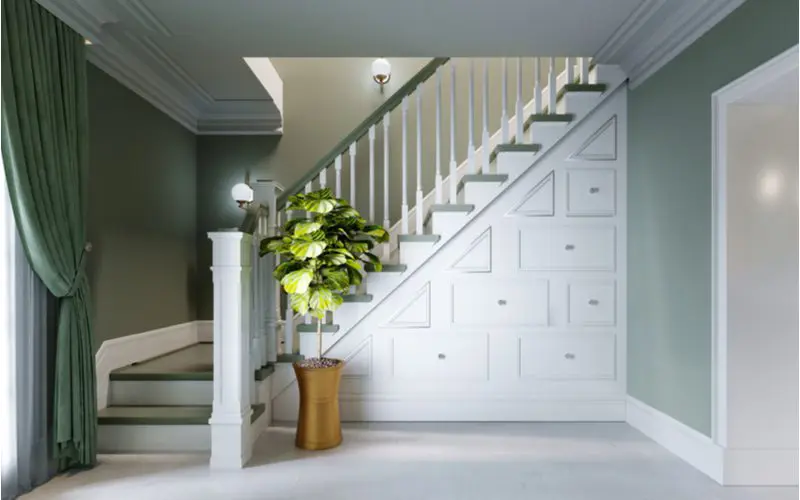
Kuprynenko Andrii/Shutterstock
Use wainscoting on an entire wall on the side of a staircase to add interest. Knobs set in the center of some panels give the illusion of drawers and cubby holes.
18. Dramatic Accents
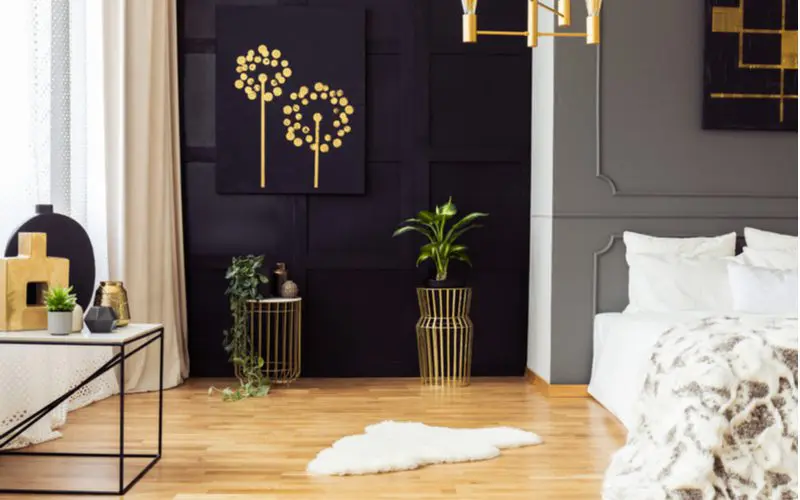
Photographee.eu/Shutterstock
An entire accent wall done in board-and-batten wainscoting and painted black can be a canvas for any accent color you want to shine.
Black with gold accents creates a dramatic wall and a motif to carry into the rest of the room.
19. Highlight the Molding
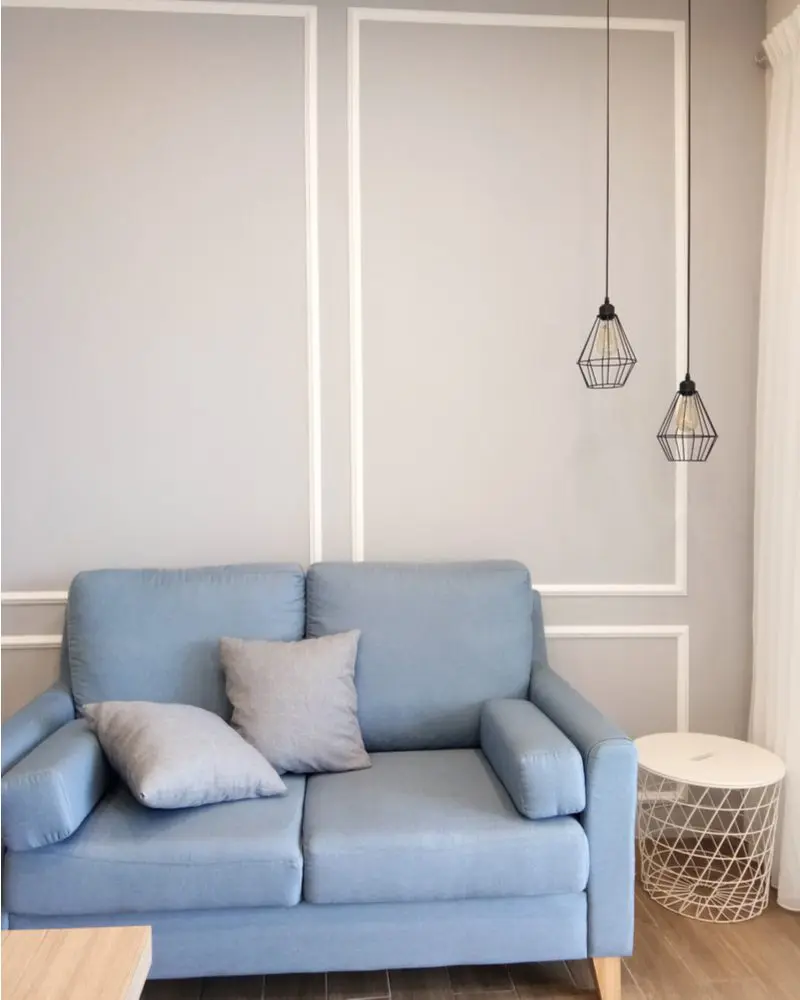
rose_yunus83/Shutterstock
An entire wall done in wainscoting with molding looks anything but plain when the molding used to create the designs is painted white against a colored background.
20. Fill Empty Spaces
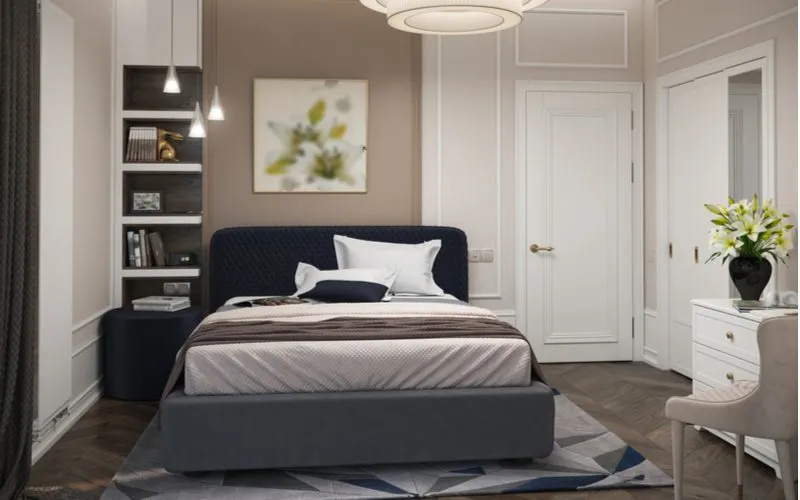
ThreeDiCube/Shutterstock
Low wainscoting that’s more like an extended baseboard rings the room. In such small spaces, the empty walls would look too busy with portraits or décor.
The look of wainscoting with simple white molding keeps the walls from looking bare and gives the room a lopsided appearance.
21. The Classic Look
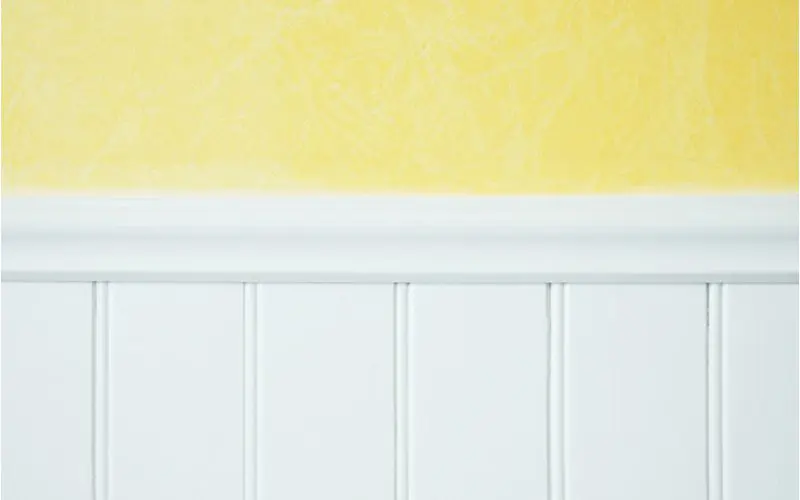
SF photo/Shutterstock
A simple white beadboard topped with a chair rail gives the basic wainscoting look a more dramatic look when topped with a texture-painted wall, here in vibrant yellow, but any color will stand out above the traditional white.
22. Vertical Panels
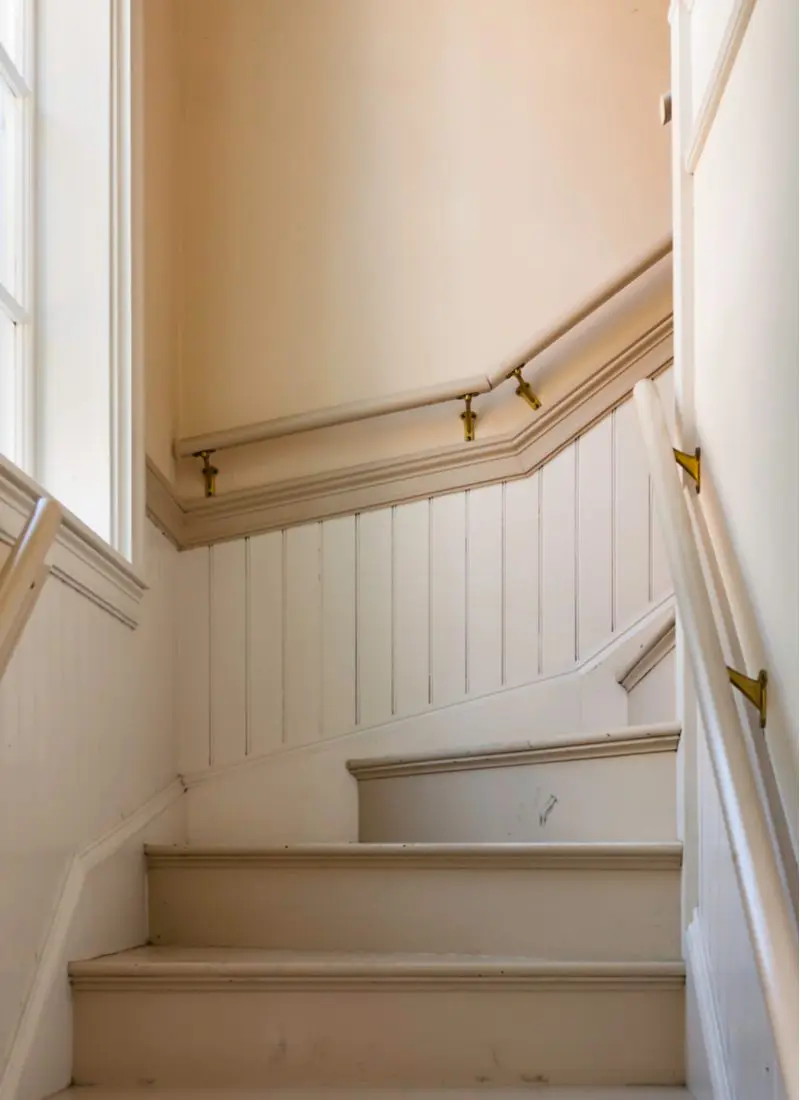
Jessa Lowell/Shutterstock
Vertical panels painted white lead up a staircase, with the chair rail top painted the same color as the walls and the handrail.
The white wainscoting gives the appearance of movement up the stairs.
23. Behind a Backsplash
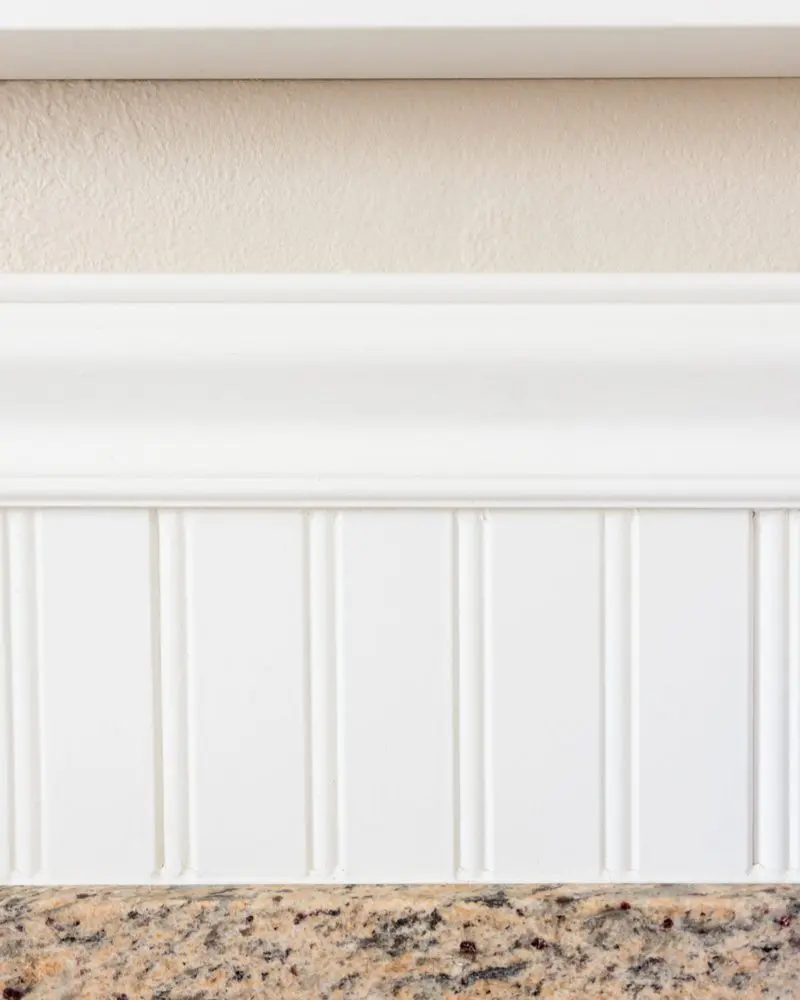
Brett Taylor Photography/Shutterstock
To cover the wall space between a backsplash and a bathroom mirror, a white beadboard topped with a chair rail adds some white to set off the beautiful granite and keep the wall from looking bare.
24. Repeating Motifs
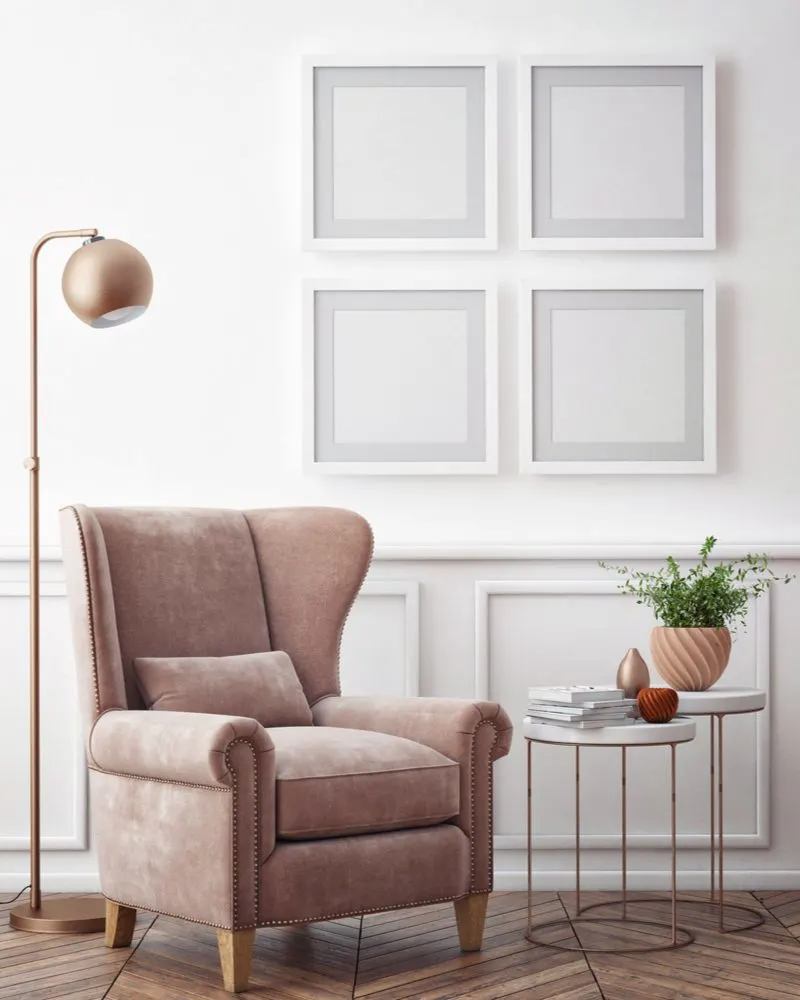
DotExe/Shutterstock
Create the look of flat-panel wainscoting with molding added to walls in squares, mimicking the picture frames that hang above.
The repeating pattern used throughout the room pleases the eye and creates a sense of balance.
25. Dark and Bright
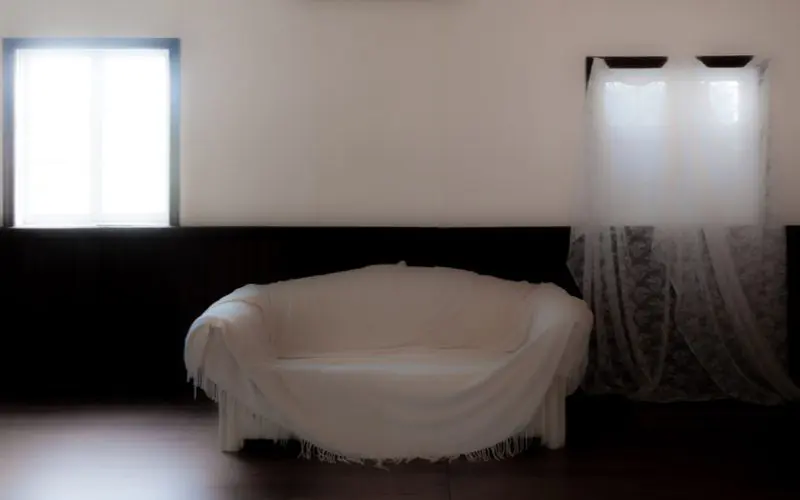
metriognome/Shutterstock
Dark wood flooring leads up to darker wainscoting to add a dramatic look to any room.
The combination of dark and light is beautiful in black and white, with the dark floor and walls leading to white upper walls, furniture, and accents.
26. Colorful Accents
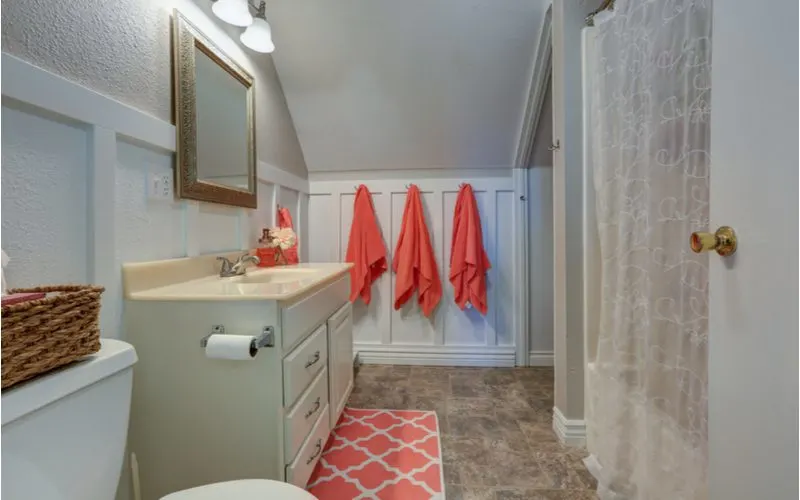
Artazum/Shutterstock
White Craftsman wainscoting used in a bathroom without a chair rail and hooks installed at the top lets towels serve as an accent color and part of the décor.
The clean lines of the flat panels set off other patterns in the room.
27. Unused Spaces
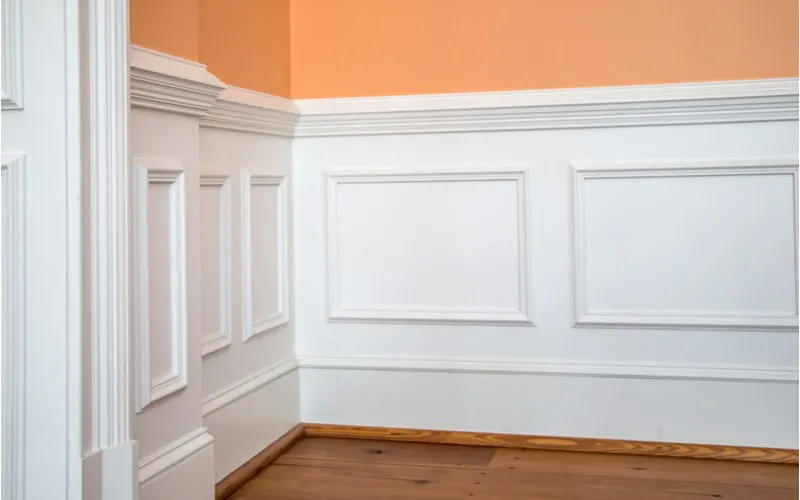
Ursula Page/Shutterstock
An unused nook with lots of angles gets dressed up with classic raised-panel wainscoting with an extra-wide bottom foot and a mirrored chair rail at the top.
The wainscoting takes an unusual, small area where many walls meet from an eyesore to a showcase.
28. Dark Wood
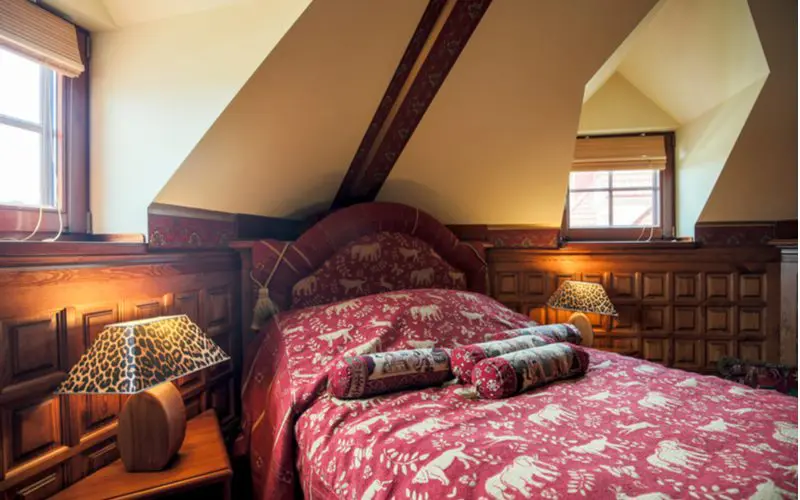
Photographee.eu/Shutterstock
A Colonial-style attic bedroom gets weight and color from dark wood wainscoting that covers the straight portion of the walls with dozens of squares and bevels.
The dark wood adds weight that anchors the room. Without it, the ceiling angles would become an unfortunate focal point.
29. Tile Wainscoting
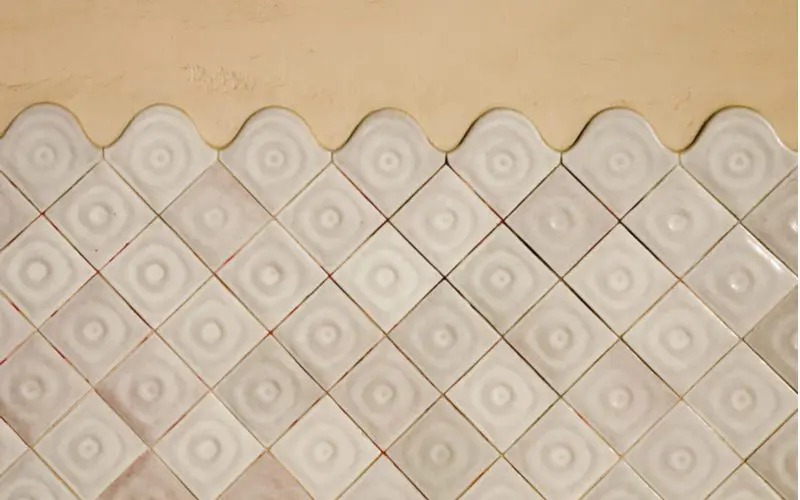
Lagui/Shutterstock
Ceramic tile wainscoting in bathrooms is a modern look, but the type of tile you use determines the tone of the entire room.
Handmade tiles or tiles with unique shapes, colors, and textures can give a room an old-world feel. Forgo a chair rail for shaped tiles at the top to complete the antique look.
30. A Cohesive Look
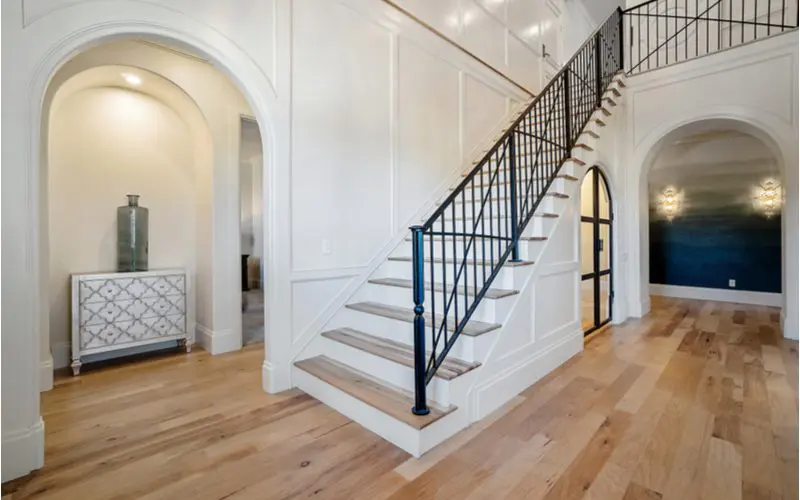
C Woods Photography/Shutterstock
Huge wainscoting panels cover the entire wall behind a staircase and extend into the next floor and above the archway at the base of the stairs.
The pattern continues around the archway and beyond the stairs to draw the eye up and along the wall.
Things to Consider
If you’re thinking about adding modern wainscoting ideas to a room or changing out the wainscoting you already have in place, keep some things in mind to prevent yourself from being limited by the classic styles you’ll find in most home improvement stores.
- Don’t be afraid of color. Traditional wainscoting is usually stained wood or painted white, but using color can change the entire look of your room. Raised molding or bevels painted an accent color can upgrade installed wainscoting and set a new tone.
- Don’t be afraid of texture. Flat-panel and raised-panel wainscoting give different looks, but you can create the illusion of wainscoting panels with molding added in shapes and sizes you want. Bevels and elaborate bottom rails and chair rails can turn basic wainscoting into a showpiece, too.
- Don’t be afraid of detail. You can create intricate detail on wainscoting panels by adding molding or wooden appliques for a Victorian or antique look around the room or only on select panels for accents.
- Use wainscoting for balance. If the room is heavy with furniture, angles, curves, and other details, plain wainscoting in a neutral color can create a backdrop without adding fussiness to an already busy room.
- Create the illusion of panels. One of the least expensive ways to create the look of fancy wainscoting panels involves cheap wooden molding arranged in shapes and patterns directly on the wall. You’re only limited by the type of molding you can find. Using molding is a great way to create the look of massive panels that take up most of the wall.
- Cut your wall-covering costs. If you love the look of expensive wallpaper, use wainscoting to reduce your costs. Simple wainscoting will also balance out detailed patterns and give the eye a place to rest to keep the design from becoming overwhelming.
Frequently Asked Questions
What rooms should have wainscoting?
Wainscoting helps make large rooms more inviting and intimate, so living rooms, dining rooms, hallways, foyers, and staircases are all great candidates for wainscoting.
What are different styles of wainscoting?
The five main styles of wainscoting are flat panel, beadboard, overlay, board and batten, and raised panel. Each one has its own pros and cons, but everyone type can have a place in your home.
What is modern wainscoting?
Modern wainscoting is a type of improvement in which wooden trim and panels are installed on a wall, and modern wainscoting is when the homeowner uses wooden pieces with very little detail to them. Think of this style as having more of a board and batten look.
What is the best material to use for wainscoting?
The best type of material to use for wainscoting is lumber or MDF. Both are easy to work with, relatively inexpensive to buy, and easy to cut. Plus, both of these materials hold up well over time and can be painted to match the rest of your home.
What Is the Purpose of Wainscoting?
Wainscoting is an aesthetic practice, but there is a practical reason behind this popular interior design trend. Wainscoting protects walls from accidental damage by creating a buffer between furniture and the wall panel.
You’ll also often see wainscoting in high-traffic areas. These decorative panels can protect walls or stairs from knocks and bumps. In homes with young children or pets, these panels also create a surface that is easier to clean compared to paint or wallpaper.
From a decorative point of view, wainscoting is an elegant way to introduce contrast and can create the impression that the walls are higher.
Is Wainscoting Dated?
Wainscoting emerged as a home décor trend in the 15th century. It’s a staple of historical homes, and we often associate it with Victorian homes and cottages.
However, wainscoting has stood the test of time. Manufacturers offer a wide range of designs, and it’s possible to find wainscoting panels that look modern, for instance, with geometric or minimalist lines.
Many homeowners are playing with home décor trends and combining wainscoting with a mix of modern and retro elements to create a unique look.
For instance, wainscoting can create an interesting contrast with a modern paint color like a soft pastel or rich Earthy tone. It can also complement current furniture trends that focus on curved pieces and sustainable materials.
Wrap-Up
If you love one of these modern wainscoting ideas, you can probably find a room that can benefit from a new look. Small rooms like bathrooms or guest rooms are good places to start to keep the project simple.
Small rooms are also easy to change if you find you don’t like a look you’ve created.
Look around your house to see which rooms could most benefit from one of these trending and modern wainscoting styles. You’re limited only by your own creativity, so don’t forget to have fun while you’re adding beauty to your home.

